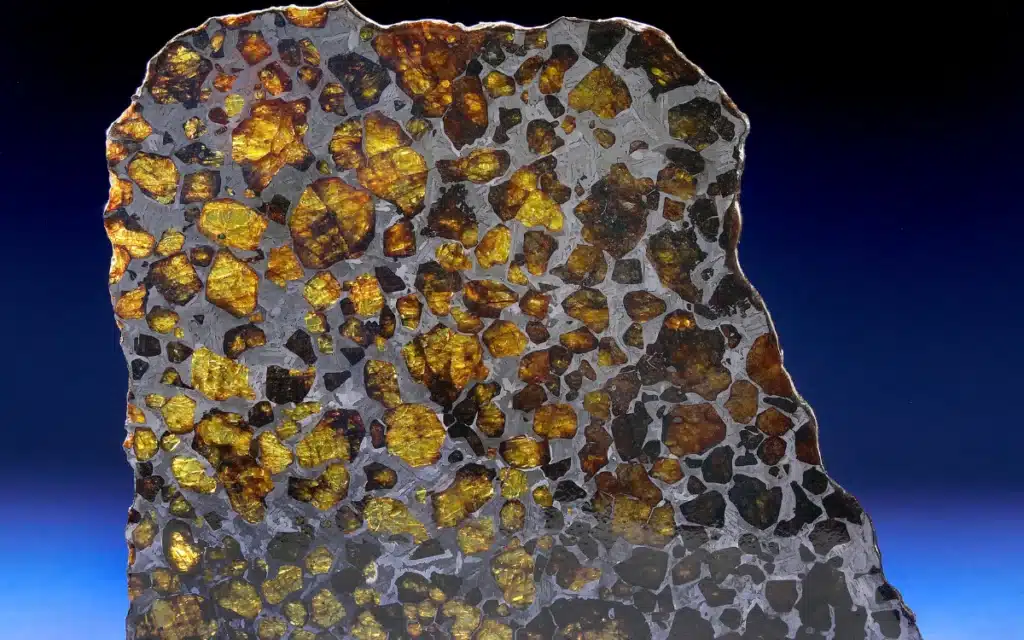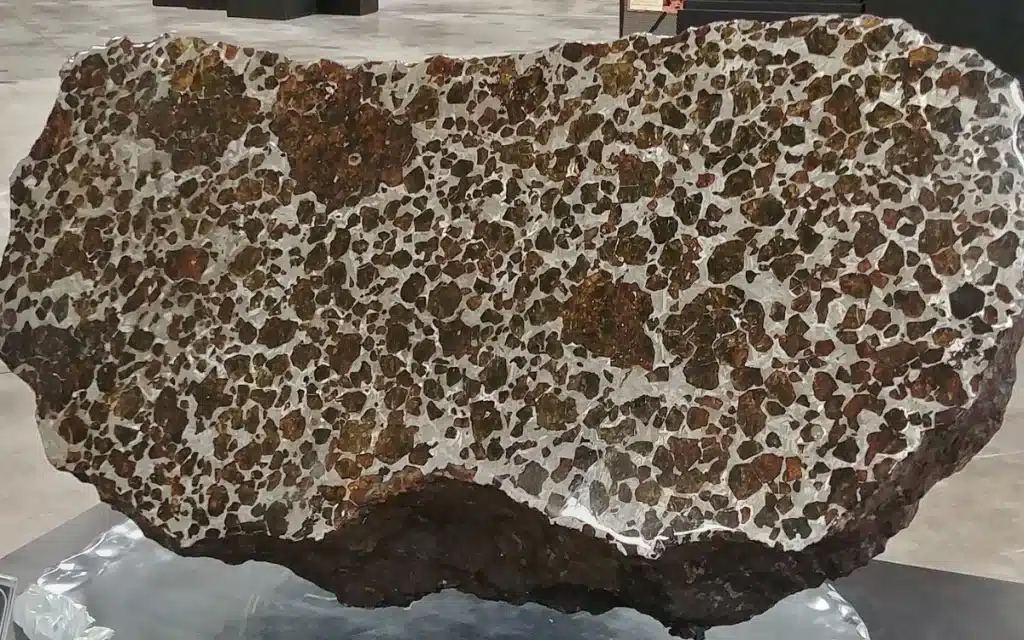Astonishing Fukang meteorite that fell to Earth and is estimated to be 4.5 billion years old
Published on Jul 25, 2025 at 11:02 PM (UTC+4)
by Jason Fan
Last updated on Jul 25, 2025 at 12:31 PM (UTC+4)
Edited by
Tom Wood
The Fukang meteorite is one of the most stunning and scientifically valuable space rocks ever discovered on Earth.
Unearthed in 2000 near the town of Fukang in China’s Xinjiang Province, this ancient relic is believed to be around 4.5 billion years old, which is roughly the same age as the Earth itself.
Its unique structure, glittering with gem-like olivine crystals embedded in an iron-nickel matrix, has captivated both scientists and collectors alike.
Weighing over a ton when it was first found, this meteorite is a rare type known as a pallasite, and it offers an extraordinary glimpse into the early solar system.
VISIT SBX CARS – View live supercar auctions powered by Supercar Blondie
One of the largest meteorites ever found
What makes the Fukang meteorite so extraordinary isn’t just its beauty but its origin.
Pallasites are believed to form deep within differentiated asteroids, specifically at the boundary between a metal core and a silicate mantle.
This makes them incredibly rare, accounting for less than one percent of all known meteorites.
The Fukang specimen in particular is one of the most visually spectacular, with its translucent olivine crystals resembling stained glass when backlit.

It’s also one of the largest meteorites ever found, with the main mass weighing around 2,211lbs.
According to research by planetary scientists and meteoriticists, the Fukang meteorite likely originated from a large parent asteroid that was destroyed in the chaotic early days of the solar system.
Its 4.5-billion-year age, confirmed through radiometric dating, means it formed just as the planets were beginning to coalesce from a disk of gas and dust surrounding the young Sun.
When it finally made its fiery descent to Earth, it carried with it a literal piece of cosmic history: a preserved fragment of the solar system’s formation process.
The Fukang meteorite was put up for auction in 2008
Large sections of the original meteorite have been cut and polished for museums and private collectors, while smaller fragments have been studied in labs worldwide.
In 2008, Bonhams offered the main mass of the Fukang meteorite up for auction, expecting it to fetch at least $2 million.
However, the lot remain unsold in its entirety, perhaps because it weighs almost as much as a small car.

Instead, the company decided to cut up the meteorite and sell the fragments to individual collectors instead.
This proved to be more successful; for example, a a small fragment weighing about 1.5lbs was sold for $115,860 in 2009.
Objects from space tend to be quite valuable; for example, NASA recently discovered an asteroid that could make every person on Earth a billionaire.
Of course, the value of the meteorite isn’t just about money.
Its scientific value remains immense, as studying it helps researchers understand planetary formation and the materials that make up our solar system.
DISCOVER SBX CARS: The global premium car auction platform powered by Supercar Blondie
Jason Fan is an experienced content creator who graduated from Nanyang Technological University in Singapore with a degree in communications. He then relocated to Australia during a millennial mid-life crisis. A fan of luxury travel and high-performance machines, he politely thanks chatbots just in case the AI apocalypse ever arrives. Jason covers a wide variety of topics, with a special focus on technology, planes and luxury.




